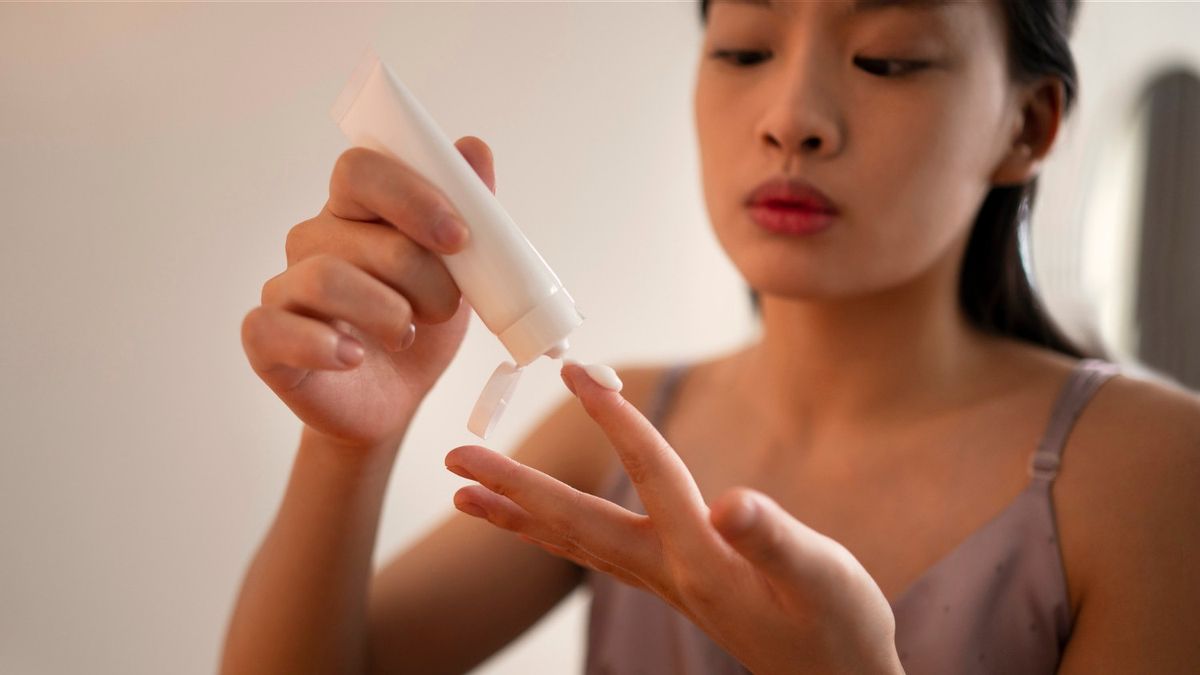YOGYAKARTA The patch test is a pasty test which is a procedure for identifying what ingredients might irritate a person's skin. In selecting new skincare, you need to do a patch test. Why do patch tests before using a new skincare?
Skin care products contain certain chemicals. Each person's skin also has a sensitivity or reacts differently to every chemical in the skincare applied. So by doing a patch test, one can find out if a skincare product contains ingredients that cause the skin to react undesirablely.
According to a report by the American Academy of Dermatology, reported by Medical News Today, Monday, May 27, more than 15,000 substances can cause allergic reactions to the skin. More specifically, research in 2021 found that personal care products can cause densities in men (28.8 percent) and women (39.5 percent). For this reason, it is very important to do patch tests before using skincare or personal care that you will only use.
If you're wondering where to do a patch test, you can do it at home. This helps identify how your skin reacts to certain skincare types that contain certain active substances as well. Pastage tests, which are diagnostic checks for chemicals, preservatives, perfumes, and cosmetics. Pastage tests involve the application of a small amount of substances or products on the skin and allow them to see if there is a reaction. It's important to know, patch tests are different from allergic tests that are usually done in laboratories or beauty clinics. But usually, dermatologists or aestheticians also offer tempal tests at their clinics. How to patch test skincare performed at home, here are the steps:
As explained above, skin care products may contain different ingredients, depending on what goals to be achieved. Some of these ingredients, it is not impossible to irritate the skin. So it is very important to do a patch test so that you know what the skin can and cannot accept.
In addition to understanding what patch tests are and how to do them, also identify the type of contact dermatitis. Contact dermatitis is skin irritation due to exposure to a substance.
SEE ALSO:
Contact dermatitis, differentiated into two, namely an inflatable contact dermatitis (ICD/irritant contact dermatitis) and an allergic contact dermatitis (ACD/allergy contact dermatitis). ICD occurs when external substances damage skin epidermis cells, triggering an inflammatory response. This irrigation can get worse due to low or high temperatures, high humidity, and a person's skin type. Meanwhile, ACD, occurs when experiencing allergic reactions after skin contact with allergens. An allergic reaction occurs when a person's immune system mistakenly thinks a substance that is harmless as a harmful substance and attacks it. This immune response causes inflammation and irritation.
Patch tests are carried out to identify certain substances in skincare products that are not suitable for skin applications. According to research, the causes of irritation or ICD include antilin, benzalkonium chloride, tretinoin and ethylene glycol tethilene are rectified, ditranol, epiclorohydrine, podofilin, and propane sulfon. Other studies show that glycol propylene is commonly found in cream-shaped cosmetics and lotion. According to the FDA, the causes of allergies or ACD, other aspects of natural rubber, fragrances, preservatives, dyes, and metals.
The English, Chinese, Japanese, Arabic, and French versions are automatically generated by the AI. So there may still be inaccuracies in translating, please always see Indonesian as our main language. (system supported by DigitalSiber.id)


















